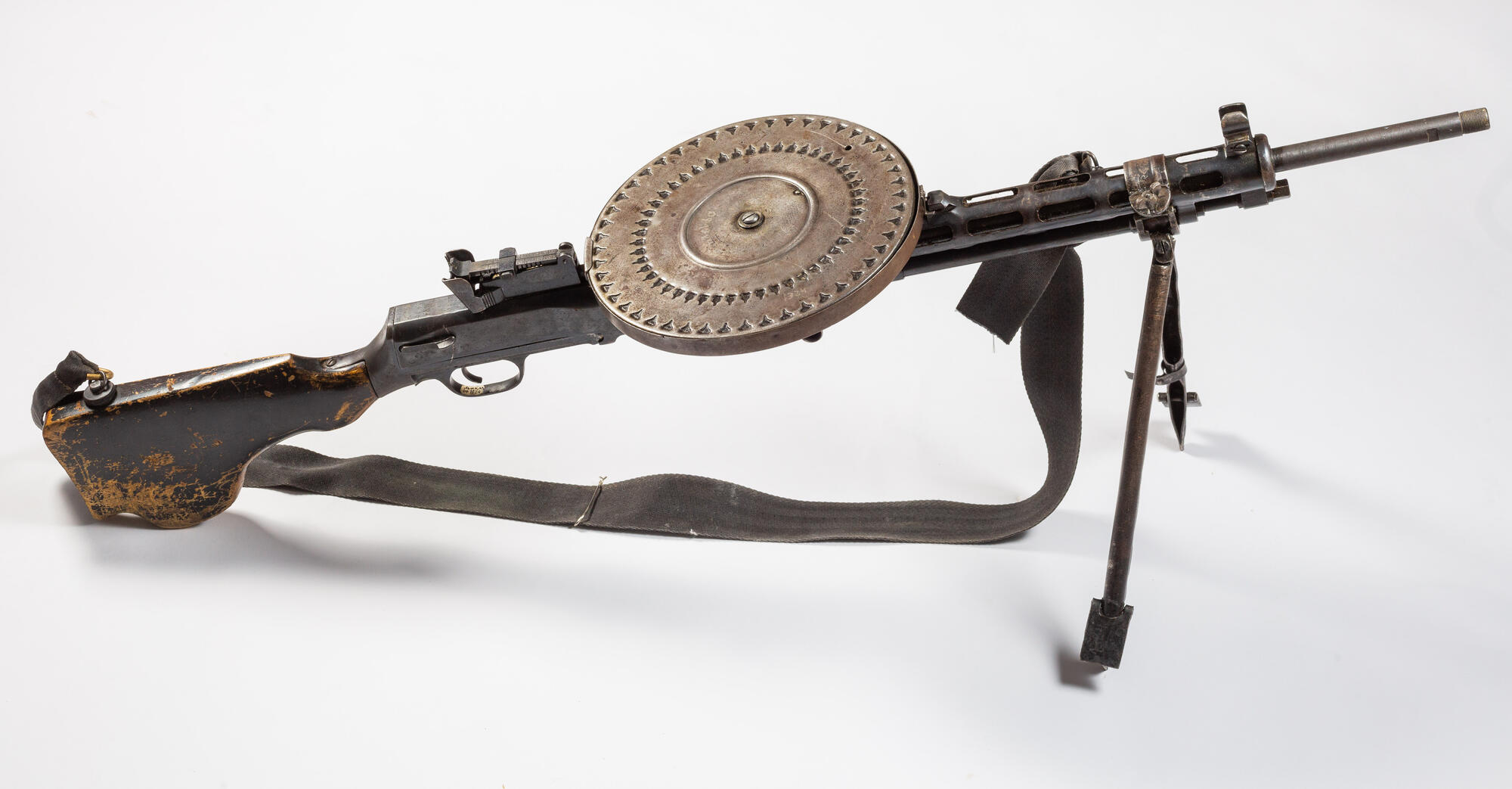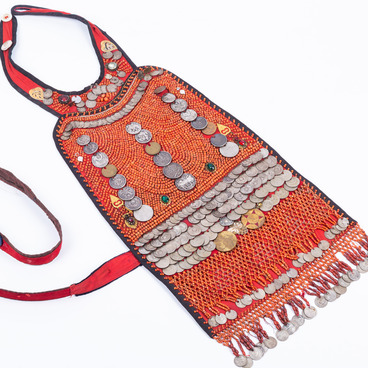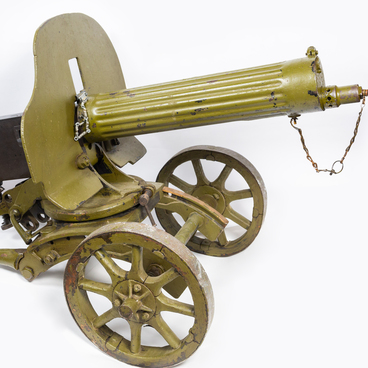The Degtyaryov hand-held machine gun (RPD for short) was designed by Vasily Degtyaryov, Russian inventor and arms maker. It was among the first firearms produced in the Soviet Union. The first hundred prototypes were tested successfully, and the USSR army officially began to use this weapon in 1927.
Before the late nineteen twenties, Russia did not have any hand-held machine guns of its own. During World War One, the army needs had to be met through procuring weapons from abroad. Degtyaryov offered a new, original solution, which shaped the future fate of his machine gun. If remained the Red Army artillery’s automatic weapon of choice for many years after.
The Kovrov Factory was entrusted with making and shipping the machine guns within specified deadlines. An RPD gun was fairly easy to assemble, and its production process required half the measurement operations, as compared to making a revolver. And the number of transitions was three times lower (as compared to a rifle).
Soviet troops were not the only ones to use this hand-held machine gun. For example, during the Winter War between the USSR and Finland (1939-1940), Finnish inventors got their hands on some RPD guns captured from the enemy. These guns became the prototype for their Finnish counterparts.
The Degtyaryov hand-held machine guns were perfect for covering the infantry advance with immense firepower, and were used extensively up until the end of the Great Patriotic War. In 1944, this weapon type underwent an active modernization that Vasily Degtyaryov oversaw personally. Specifically, Soviet inventors managed to improve its usability, reliability, and durability. The new modification of the RPD was called DPM, Degtyaryov’s Modernized Machine Gun.
Its predecessor was decommissioned during the same period, and shipped in large batches to the USSR’s allies. For instance, all Warsaw Pact countries continued to use the Degtyaryov hand-held machine guns up to the 1960s. This weapon made an appearance during various military conflicts, including those in Vietnam and Korea.
Before the late nineteen twenties, Russia did not have any hand-held machine guns of its own. During World War One, the army needs had to be met through procuring weapons from abroad. Degtyaryov offered a new, original solution, which shaped the future fate of his machine gun. If remained the Red Army artillery’s automatic weapon of choice for many years after.
The Kovrov Factory was entrusted with making and shipping the machine guns within specified deadlines. An RPD gun was fairly easy to assemble, and its production process required half the measurement operations, as compared to making a revolver. And the number of transitions was three times lower (as compared to a rifle).
Soviet troops were not the only ones to use this hand-held machine gun. For example, during the Winter War between the USSR and Finland (1939-1940), Finnish inventors got their hands on some RPD guns captured from the enemy. These guns became the prototype for their Finnish counterparts.
The Degtyaryov hand-held machine guns were perfect for covering the infantry advance with immense firepower, and were used extensively up until the end of the Great Patriotic War. In 1944, this weapon type underwent an active modernization that Vasily Degtyaryov oversaw personally. Specifically, Soviet inventors managed to improve its usability, reliability, and durability. The new modification of the RPD was called DPM, Degtyaryov’s Modernized Machine Gun.
Its predecessor was decommissioned during the same period, and shipped in large batches to the USSR’s allies. For instance, all Warsaw Pact countries continued to use the Degtyaryov hand-held machine guns up to the 1960s. This weapon made an appearance during various military conflicts, including those in Vietnam and Korea.



